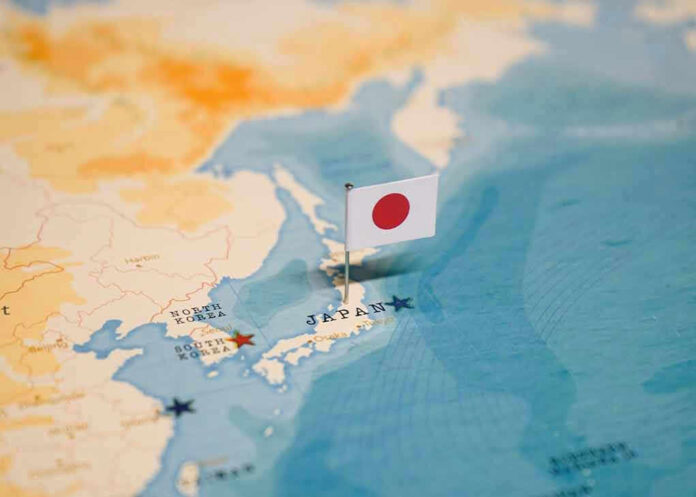Only in 2025 America do we find ourselves reading headlines about 80-year-old U.S. bombs still threatening lives in Japan—while our own leaders trip over themselves to subsidize illegal immigrants and rewrite history instead of respecting the lessons and sacrifices of the past.
At a Glance
- A 275-pound U.S.-made World War II bomb was unearthed and defused in Naha, Okinawa, causing the evacuation of more than 2,300 residents.
- Okinawa remains riddled with unexploded ordnance nearly 80 years after the war, disrupting lives and development.
- Japanese authorities have ramped up bomb disposal operations in response to repeated discoveries of these wartime remnants.
- The legacy of U.S. munitions still shapes Okinawa’s politics, economy, and society long after the last shot was fired.
Another Reminder of War’s Cost: 2,300 Okinawans Evacuated for U.S. Bomb Disposal
Only in the upside-down world of 2025 can a city’s routine be shattered by the belated consequences of a war fought before most of us were even born. On July 6, the heart of Naha, Okinawa’s capital, was brought to a standstill as Japanese troops defused a 275-pound U.S.-made bomb left over from World War II, discovered buried beneath a historic villa. More than 2,300 residents were hustled out of their homes for hours while the bomb disposal squad neutralized a weapon older than Joe Biden’s favorite gaffes. No injuries or damage were reported, but this was hardly an isolated incident. Okinawa has become a never-ending archaeological dig for American-made munitions, courtesy of the largest amphibious assault in the Pacific theater, a legacy that the Japanese are forced to live with—while our own government can barely manage to keep our own borders secure.
This is not the first time Okinawans have been uprooted by the ghosts of America’s military past. In March of this year, Japanese authorities detonated over 1,600 pounds of World War II ordnance, including three similar 275-pound bombs, at Naha’s port. Just months earlier, a bomb exploded at Miyazaki Airport, prompting a nationwide scramble to survey airports for unexploded munitions. This is the reality for a place that was bombarded into oblivion by both sides in World War II: a “peaceful” modern city that still gets shut down by bombs dropped generations ago.
Who Bears the Burden? Local Residents and Authorities Forced to Cope
The logistical headache of these bomb disposals falls squarely on the shoulders of the Japan Ground Self-Defense Force, who must tiptoe around ancient explosives while coordinating with local officials and police. Naha’s city government orchestrates the evacuations and public alerts, while the Okinawa Prefectural Police make sure no one sneaks back home for a forgotten wallet. Over 2,300 people had their weekend plans obliterated, not by a hurricane, not by a pandemic, but by a rusty chunk of American steel that’s been buried since Harry Truman was in office. The entire process is a sobering reminder of the costs of war—and yet, ask yourself, when was the last time you saw this kind of high-stakes government action for American citizens threatened by crime or illegal immigration on our own soil?
Meanwhile, the U.S. government’s only involvement these days is as the original supplier. Japanese authorities, meanwhile, get to do the heavy lifting—literally—and the local taxpayers foot the bill for bomb disposal, evacuations, and project delays. Urban development in Okinawa is a game of Russian roulette: every new construction project risks uncovering more deadly souvenirs from the so-called “Good War.”
The Long Shadow of WWII: Endless Clean-Up, Political Frustration, and Economic Toll
The bomb defused this July is just the latest in a relentless parade of similar incidents, underscoring the fact that for Okinawans, World War II isn’t ancient history—it’s a recurring nightmare. Every new find means more disruption, more delays for construction and infrastructure, and more anxiety for families who never know if the next shovel of dirt will unearth another ticking time bomb. The cost isn’t just measured in yen, but in lost time, economic drag, and the psychological toll of living perpetually on edge.
This endless bomb clean-up is a stark contrast to the priorities of many Western governments today. While American taxpayers watch billions thrown at illegal immigrants and endless “humanitarian” programs, Japanese city governments are forced to spend precious resources on cleaning up the mess of a war the United States ended generations ago. The irony is hard to miss—especially as the U.S. government now seems more concerned with appeasing international “woke” sensibilities than with safeguarding its own citizens at home or supporting allies dealing with our legacy abroad.











